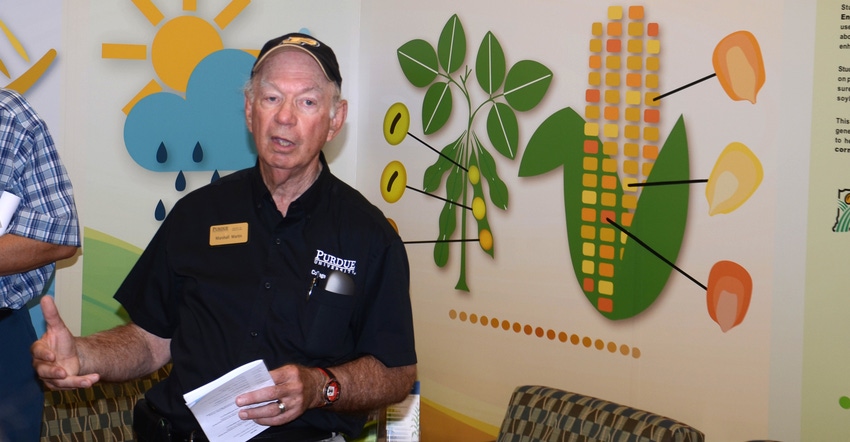October 14, 2019

A unique structure rose from the prairie at Purdue University’s Agronomy Center for Research and Education four years ago. Known as the Indiana Corn and Soybean Innovation Center, it opened in September 2016. Has it delivered what was promised?
Karen Plaut, dean of Purdue’s College of Agriculture, believes it has, and will continue delivering tangible results far into the future. “Startup companies are appearing to apply genotypic and phenotypic information, which a broad cross-section of disciplines and faculty have discovered through projects based here,” Plaut says. “A primary goal was to determine how the genotype — things determined by genetics which we can’t see — affects plant phenotypes, which are traits we can see.”
Plaut believes that’s happening today and will continue happening over time. She’s excited about the possibilities.
Short history
Plaut has every right to become excited when she talks about the Indiana Corn and Soybean Innovation Center. Before she was dean, she was director of ag research. When Purdue President Mitch Daniels announced plans to devote major funding to the most innovative initiatives faculty could dream up, Plaut was instrumental in developing an ambitious plant-sensing and information-collecting proposal. In the end, it was one of only two campus-wide proposals funded through Daniels’ program.
The result is a facility that’s one-of-a-kind in the U.S., if not the world. The Indiana Corn Marketing Council and Indiana Soybean Alliance added $2 million each to the original $20 million initiative. Most of the funding went toward the facility and equipment, but some was reserved to fund innovative projects, which faculty members compete for each year.
Some people who work there are plant breeders or technicians, using some of the most innovative, advanced equipment anywhere to streamline the tedious process of improving genetics through traditional breeding programs. Others spend time developing more efficient sensors that can pick up differences in phenotype that perhaps couldn’t be detected before.
Advances so far
Bob Nielsen, Purdue Extension corn specialist; Jim Camberato, Purdue Extension soil fertility specialist; and Ana Morales, a graduate student, recently demonstrated how they use unmanned aerial vehicles to capture more than pretty pictures. The demonstration occurred outside the facility on a day Plaut set aside for visitors to learn about how Purdue contributes to digital agriculture.
Nielsen notes that UAVs can collect more than images. They collect data, which others use to study crops more intently. Once you have data, you’re into the next realm of digital agriculture, Nielsen says.
“Some cameras they’re using to collect this information were developed because of things learned at the Indiana Corn and Soybean Innovation Center,” Plaut says. “That’s the type of thing we hoped would happen, and it’s already happening. Some projects underway will help our researchers see beyond what we can see with the naked eye. They’re already evaluating what role different wavelengths of light play in plant growth.”
One entire bay within the innovation center is devoted to those who specialize in developing and trying out new styles of UAVs and new sensors. Once the data is collected, it’s available for further analysis by scientists of various disciplines.
The bottom line is Plaut believes the center is already showing return on investment. Expect that to ramp up several times over in the not-so-distant future.
Comments? Email [email protected].
You May Also Like




